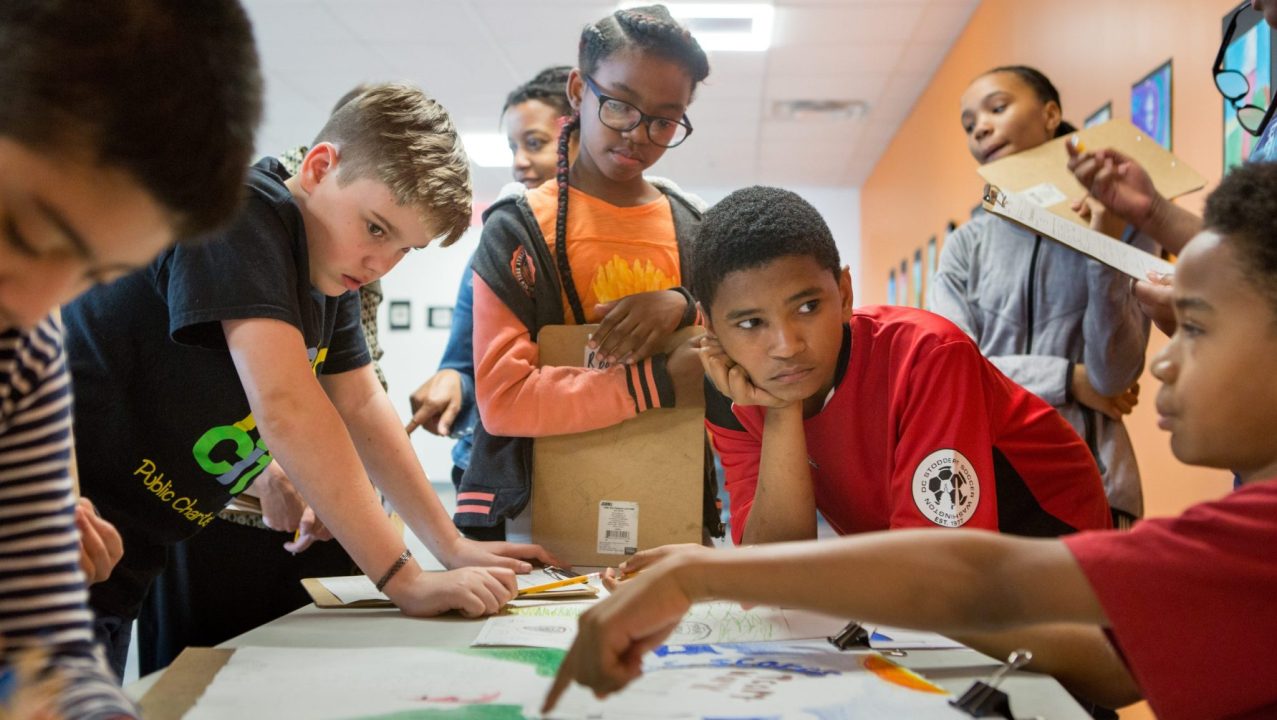Day 15: The Science Conference

Photo by Allison Shelley/The Verbatim Agency for EDUimages
-
Culminating Project
OVERVIEW
Groups have been working on their culminating project for two days. Today, the inquiry teams will participate in a “science conference” where they will present their digital informational book to share what they have learned about two big ideas: (1) the relationship between plants and their environments, and (2) how adaptations helped some plant populations survive changing environments. You can refer back to Day 13 for an overview of the project.
MATERIALS NEEDED
- Teams will need the digital books they have created.
SETUP
- Ideally, the tables or desks should be set up in a semicircle where all teams can see each other. This configuration will help engage all children in the discussion.
- Each presenting team will stand in front of the class, prepared to answer any questions.
- The teacher should sit within the semicircle as well.
- Decide the order in which the teams will present.
PRESENTATIONS
- Welcome the children to the “science conference” and remind them what a science conference is (see background information for science conferences in the lesson for Day 13).
- Invite each team to present their books. Ideally, they would read their books in their entirety, but if time doesn’t allow, have each team read their favorite page (or two) and discuss why it was their favorite.
- It would be optimal if the digital books could be projected for the whole class to see but they can also be shared on a smaller screen such as a Chromebook or tablet screen.
DEBRIEFING
- After all presentations are complete, ask children what patterns they may have noticed across the information presented by the teams (e.g., how plant groups are similar or different, why plant groups might be classified the way they are).
- Invite the children into a discussion with this guiding question: How does each group’s investigation of one group of plants represent the adaptations that allowed some plant populations to survive the changes in the environment over time?
- Invite children to talk about the scientific process of this unit, what they enjoyed, and what they would like to continue to do.
- Congratulate the children on the work they did over the duration of the unit!
EVALUATE
- Were the informational books well organized?
- Did the evidence given reasonably support the team’s investigation claim?
- Did the teams succeed in representing how adaptations allowed some plant populations to survive over time in response to a changing environment?


